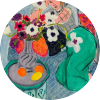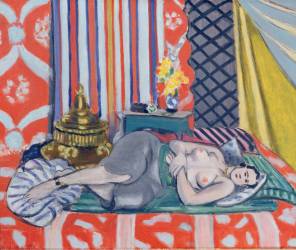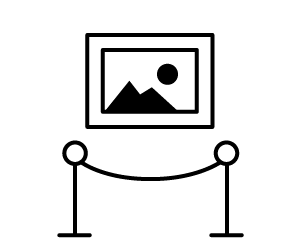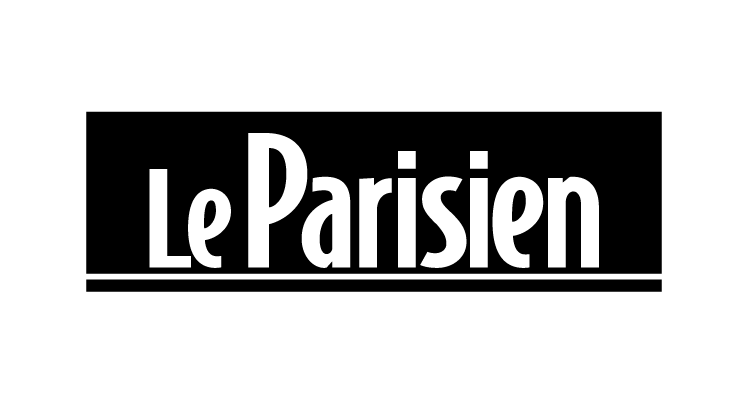Fauvism wall Art, canvas prints & paintings

fauvism fine art prints and canvas prints
Fauvism is an avant-garde movement of the early twentieth century. It originated in the meeting of two artists: Henri Matisse and Paul Signac in 1904 in the south of France. Paul Signac taught Matisse the principles of neo-impressionism and the division of colour. Fauvism finds its roots in a review of the 1905 Salon d'Automne written by the critic Louis Vauxcelles. “Au centre de la salle, un torse d'enfant et un petit buste en marbre, d'Albert Marque, qui modèle avec une science délicate. La candeur de ces bustes surprend au milieu de l'orgie des tons purs : Donatello … chez les fauves [...]". This statement emphasises the contrast between the modern works of the future Fauvist group and the work of Albert Marque, which is here associated with a work by Donatello, a sculptor of the Florentine Renaissance. Thus, the designation of the group does not come from the artists themselves. They will never be a constituted group and will not publish a manifesto of the movement. Fauvism is therefore defined by a network of artists, painters who formed friendships and shared their artistic research. This movement is characterised by a research on colour, which takes precedence over drawing. The colours are vivid, exacerbated and pure; they are arranged in solid colours or in dots. This fondness for colour and its effects can be explained by the change in pictorial representation made by the artists. Indeed, artists no longer wished to paint an entirely figurative world borrowed from reality, but rather a world inspired by their own inner reality. Colour gradually gained autonomy. In the Fauvist paintings, the choice of colours arbitrary and subjective. Forms are simplified and accentuated. The themes most represented by the Fauvist painters were landscapes, particularly those of the South of France, whose light fascinated the artists. They researched the effects of light on perception. Trees, regardless of their colour, were their favourite subjects. The same was true of portraits, with artists representing each other, and genre scenes. Fauvism developed simultaneously with Cubism, a movement that tended towards greater abstraction than the Fauvists. Moreover, the Cubists attached more importance to forms than to colours. This desire to represent one's inner world was the beginning of abstract art, which appeared a decade later with Wassily Kandinsky and his essay entitled The Spiritual in Art, and in Painting in Particular (1913).
famous fauvist painting artworks
Henri Matisse can be placed at the origins of Fauvism. In 1905, he went to the town of Collioure with the painter André Derain. During this trip, the two artists established the principles of Fauvism. They painted numerous landscapes, a type of representation that allowed them to experiment. The plausible representation of reality lost its importance. Objects or natural elements were not depicted with real colours. The sea, for example, is sometimes represented in blue or red. These early works show that the artists were inspired by the divisionist theory, especially in the application of colour in small strokes. Nevertheless, both painters freed themselves from the scientific aspect of Divisionism. They rendered light not according to its scientific analysis, but according to the artist's feelings. In 1905, Matisse painted Les Toits de Collioure. This work shows a free application of colour. This idea is even more explicit in La Plage rouge, which the artist painted around the same time. The sand on which the passers-by walk is red. Matisse explained about this painting that " Vous vous étonnez sans doute de voir une plage de cette couleur, en réalité elle était de sable jaune, je me rendis compte que je l'avais peinte avec du rouge, le lendemain, j'essayai avec du jaune. Ça n'allait plus du tout, c'est pourquoi j'ai remis du rouge". Some of the paintings done during this stay were exhibited at the 1905 Salon in Paris.
Our fauvist art prints will bring a touch of colour to your home. Muzéo offers you a selection of pictorial works of the fauvist painters for the greatest art lovers in the form of paintings, cushions, wallpapers or lampshades. All our art reproductions of paintings are handmade by craftsmen proud to preserve the spirit of the work.




















































